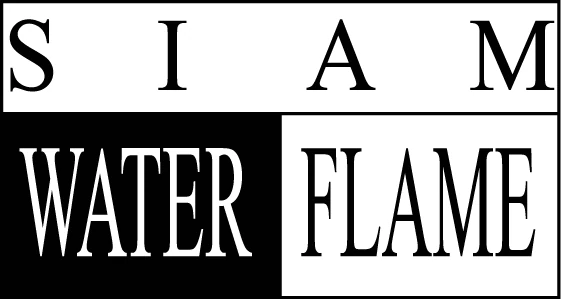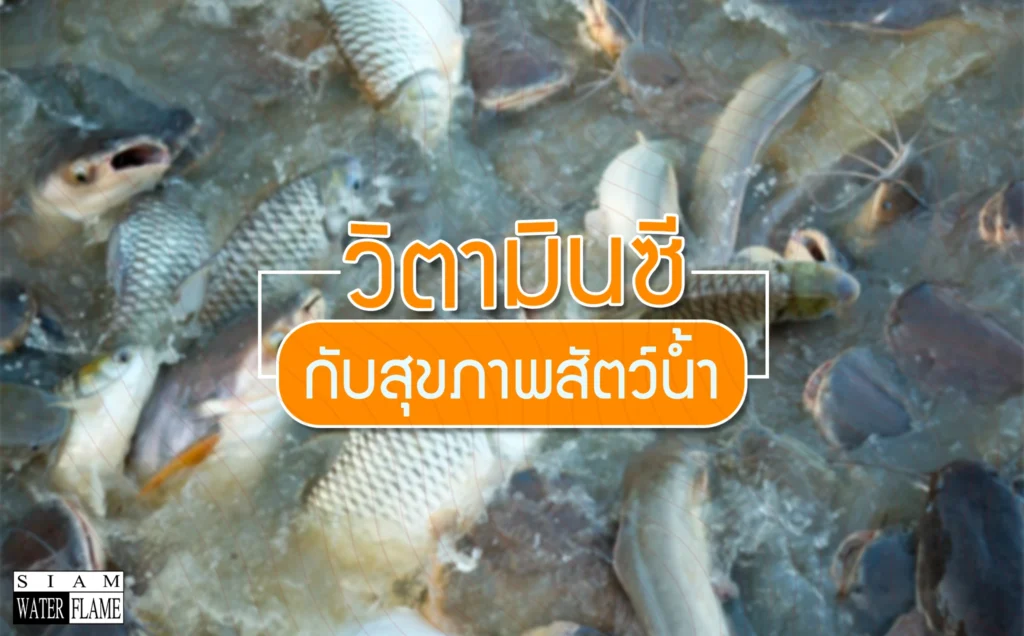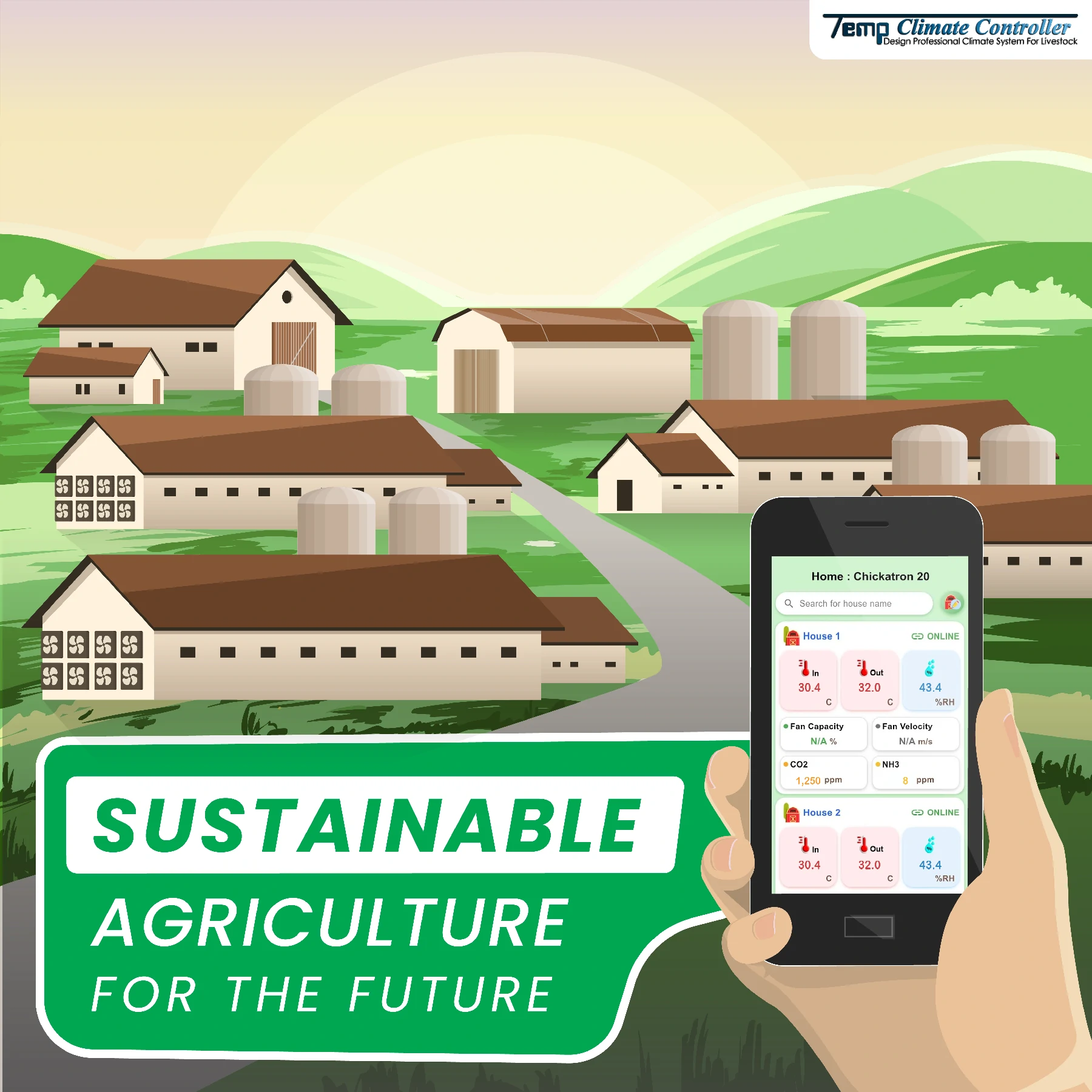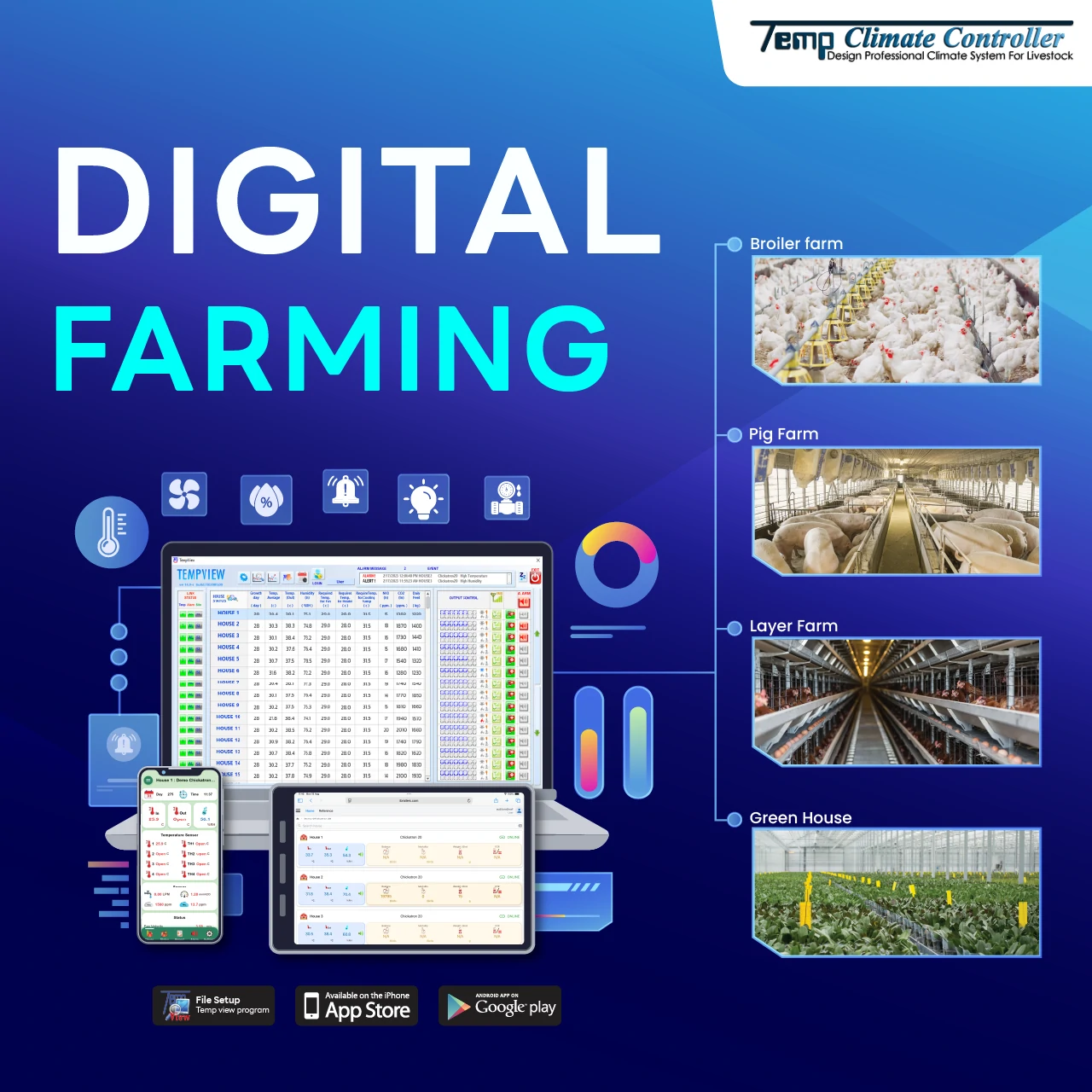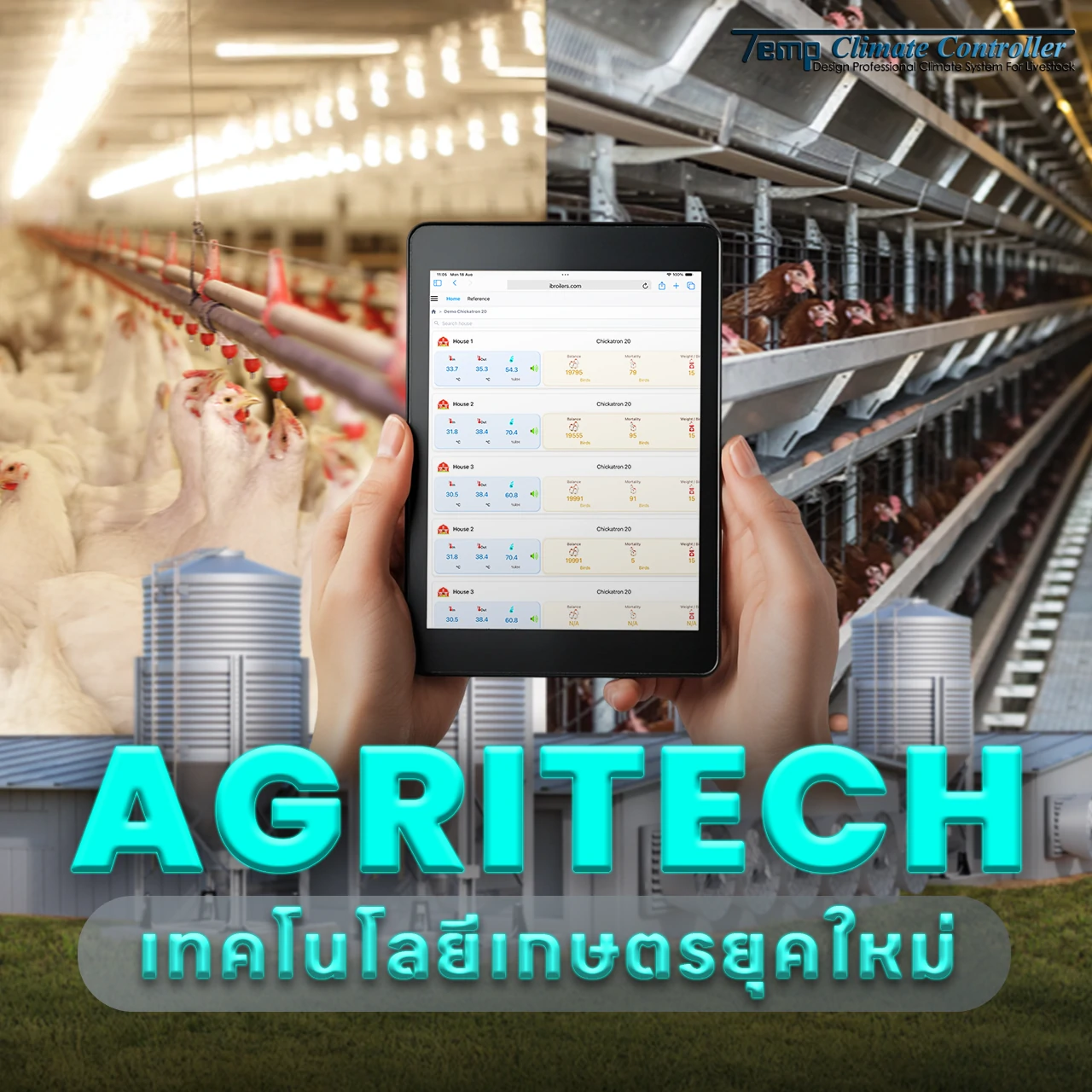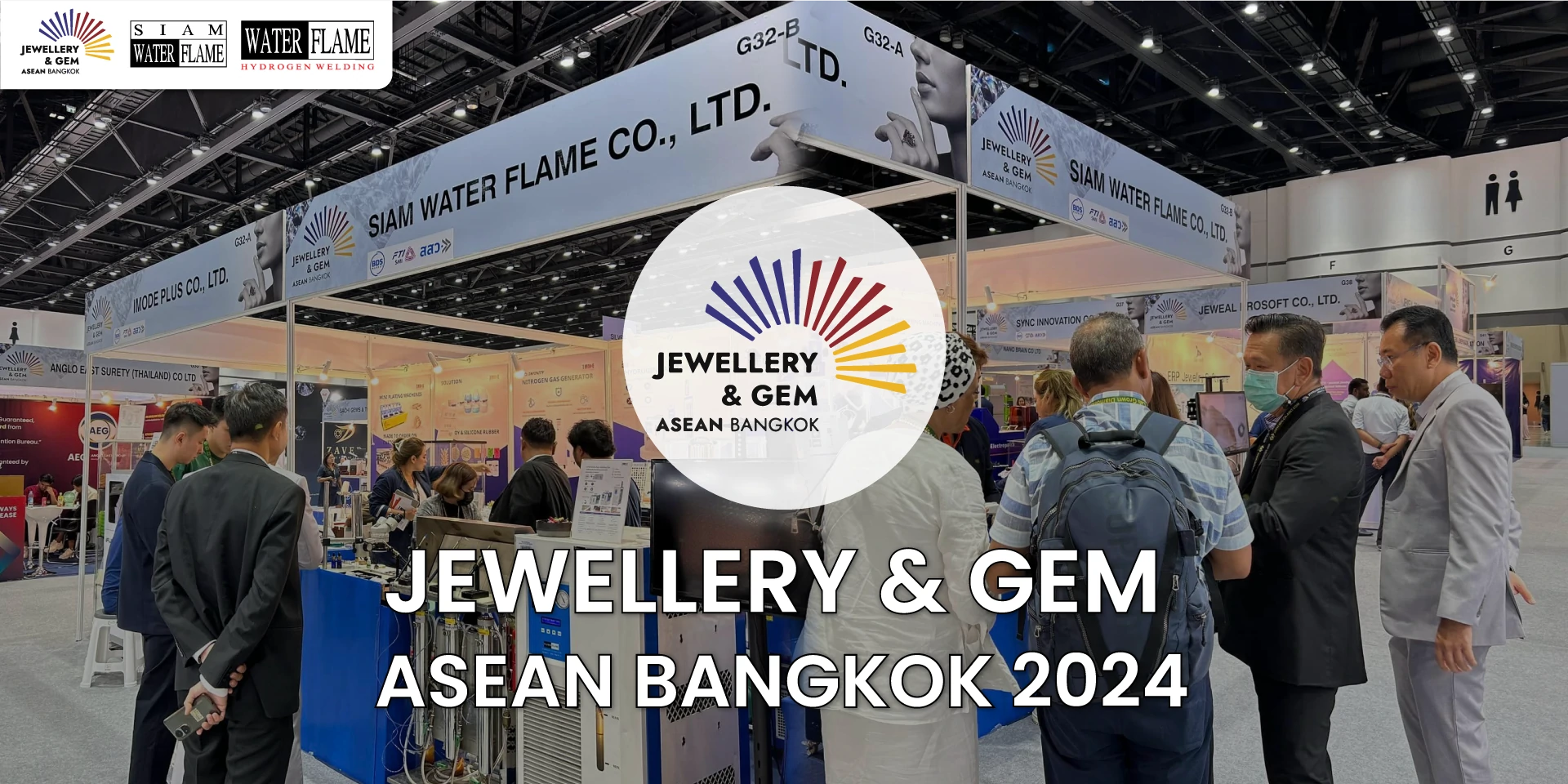Importance and function of vitamin C to aquatic animals
Vitamin C is a water-soluble vitamin that plays an important role in the growth of aquatic animals as well as humans. Because aquatic animals are unable to synthesize vitamin C due to lack of enzymes. L-glunolactone-oxidase (L-gulonolactone oxidase), it is therefore necessary to supplement vitamin C in aquaculture diets.
Most of the functions of vitamin C are involved in various aquatic life processes such as immunity. hormone production process of absorbing minerals and nutrients and metabolic processes of the body In the metabolic process, vitamin C acts as a co-factor of the enzymes Propyl and Lysyl hydroxylase in the process of
Hydroxylation of Proline and Lysine, which are important steps to create Hydroxyproline and Hydroxylysine, which will lead to the synthesis of Collagen, which is necessary for building the body structure in aquatic larvae.
Factors for vitamin C requirements of aquatic animals
1. Species of aquatic animals
Vitamin C requirements of sea bass fry in saltwater. It was found that the level of vitamin C in the diet suitable for growth was 500-700 mg/kg of feed. As for vitamin C requirements of yellow catfish, it was found that the level of vitamin C in the diet suitable for growth was 500 mg/kg feed.
2. Age of aquatic animals
Young aquatic animals have a high need for vitamin C. As the age of aquatic animals increases, the demand for vitamin C decreases.
3. Feed quality
If the feed pellets used for aquaculture are high in fat Vitamin C acts as an anti-rancidant. If adding vitamin C in the diet is not enough It will cause vitamin C to be used to prevent rancidity before it is fed to aquatic animals.
Characteristics of aquatic animals lacking vitamin C
Aquatic animals that do not get enough vitamin C will show abnormal symptoms as follows:
– Slower growth, black body, lethargic, bleeding from the gums brittle blood vessels The buccal bulge closes and opens quickly and short, the beak is short, loss of balance, caudal fin erosion, eyes protruding.
– crooked spine (Scoliosis) due to the strength of collagen. which is an important structure of bone and cartilage– decreased immune system This makes aquatic animals have the ability to resist infection from various diseases.
sometimes found Even if the raisers use vitamin C that is used to add to the feed of aquatic animals. But aquatic animals still suffer from vitamin C deficiency. Because vitamin C is usually not durable. And can be easily destroyed during the food production process. Food storage and during feeding of aquatic animals
Therefore, the development of vitamin C production in various forms for use in animal feed, more water, such as coated vitamin C, which is coated with ethyl cellulose, silicone, gelatin, glyceride and fat, etc. However, fat-coated vitamin C is easily destroyed under pelletizing and high-temperature, humid and high-temperature production processes. may result in the grease coating melting until it loses its condition Therefore, a form of vitamin C was developed.
It is a vitamin C derivative such as L-ascorbyl-2-polyphosphate, L-ascorbyl-2-monophosphate, L-ascorbyl-2-sulfate, etc. to prevent vitamin C loss in the aquaculture feed production process. It also helps reduce the cost of the production of aquatic animal feed.It can be seen that vitamin C is another aid in making aquaculture more cost-effective because
It makes aquatic animals grow well, have a high survival rate, and have a strong immune system. Improves resistance to various pathogens resistant to stress For this reason, it is no wonder that during aquaculture it is necessary to supplement with vitamin C supplementation along with it.
Importance and function of vitamin C to aquatic animals
Vitamin C is a water-soluble vitamin that plays an important role in the growth of aquatic animals as well as humans. Because aquatic animals are unable to synthesize vitamin C due to lack of enzymes. L-glunolactone-oxidase (L-gulonolactone oxidase), it is therefore necessary to supplement vitamin C in aquaculture diets.
Most of the functions of vitamin C are involved in various aquatic life processes such as immunity. hormone production process of absorbing minerals and nutrients and metabolic processes of the body In the metabolic process, vitamin C acts as a co-factor of the enzymes Propyl and Lysyl hydroxylase in the process of Hydroxylation of Proline and Lysine, which are important steps to create Hydroxyproline and Hydroxylysine, which will lead to the synthesis of Collagen, which is necessary for building the body structure in aquatic larvae.
Factors for vitamin C requirements of aquatic animals
1. Species of aquatic animals
Vitamin C requirements of sea bass fry in saltwater. It was found that the level of vitamin C in the diet suitable for growth was 500-700 mg/kg of feed. As for vitamin C requirements of yellow catfish, it was found that the level of vitamin C in the diet suitable for growth was 500 mg/ kg feed.
2. Age of aquatic animals
Young aquatic animals have a high need for vitamin C. As the age of aquatic animals increases, the demand for vitamin C decreases.
3. Feed quality
If the feed pellets used for aquaculture are high in fat Vitamin C acts as an anti-rancidant. If adding vitamin C in the diet is not enough It will cause vitamin C to be used to prevent rancidity before it is fed to aquatic animals.
Characteristics of aquatic animals lacking vitamin C
Aquatic animals that do not get enough vitamin C will show abnormal symptoms as follows:
– Slower growth, black body, lethargic, bleeding from the gums brittle blood vessels The buccal bulge closes and opens quickly and short, the beak is short, loss of balance, caudal fin erosion, eyes protruding.
– crooked spine (Scoliosis) due to the strength of collagen. which is an important structure of bone and cartilage
– decreased immune system This makes aquatic animals have the ability to resist infection from various diseases.
sometimes found Even if the raisers use vitamin C that is used to add to the feed of aquatic animals. But aquatic animals still suffer from vitamin C deficiency.
Because vitamin C is usually not durable. And can be easily destroyed during the food production process. Food storage and during feeding of aquatic animals
Therefore, the development of vitamin C production in various forms for use in animal feed, more water, such as coated vitamin C, which is coated with ethyl cellulose, silicone, gelatin, glyceride and fat, etc.
However, fat-coated vitamin C is easily destroyed under pelletizing and high-temperature, humid and high-temperature production processes. may result in the grease coating melting until it loses its condition Therefore, a form of vitamin C was developed.
It is a vitamin C derivative such as L-ascorbyl-2-polyphosphate, L-ascorbyl-2-monophosphate, L-ascorbyl-2-sulfate, etc. to prevent vitamin C loss in the aquaculture feed production process. It also helps reduce the cost of the production of aquatic animal feed.
It can be seen that vitamin C is another aid in making aquaculture more cost-effective because
It makes aquatic animals grow well, have a high survival rate, and have a strong immune system. Improves resistance to various pathogens
resistant to stress For this reason, it is no wonder that during aquaculture it is necessary to supplement with vitamin C supplementation along with it.
Importance and function of vitamin C to aquatic animals
Vitamin C is a water-soluble vitamin that plays an important role in the growth of aquatic animals as well as humans. Because aquatic animals are unable to synthesize vitamin C due to lack of enzymes. L-glunolactone-oxidase (L-gulonolactone oxidase), it is therefore necessary to supplement vitamin C in aquaculture diets.
Most of the functions of vitamin C are involved in various aquatic life processes such as immunity. hormone production process of absorbing minerals and nutrients and metabolic processes of the body In the metabolic process, vitamin C acts as a co-factor of the enzymes Propyl and Lysyl hydroxylase in the process of Hydroxylation of Proline and Lysine,
which are important steps to create Hydroxyproline and Hydroxylysine, which will lead to the synthesis of Collagen, which is necessary for building the body structure in aquatic larvae.
Factors for vitamin C requirements of aquatic animals
1. Species of aquatic animals
Vitamin C requirements of sea bass fry in saltwater. It was found that the level of vitamin C in the diet suitable for growth was 500-700 mg/kg of feed. As for vitamin C requirements of yellow catfish, it was found that the level of vitamin C in the diet suitable for growth was 500 mg/kg feed.
2. Age of aquatic animals
Young aquatic animals have a high need for vitamin C. As the age of aquatic animals increases, the demand for vitamin C decreases.
3. Feed quality
If the feed pellets used for aquaculture are high in fat Vitamin C acts as an anti-rancidant. If adding vitamin C in the diet is not enough It will cause vitamin C to be used to prevent rancidity before it is fed to aquatic animals.
Characteristics of aquatic animals lacking vitamin C
Aquatic animals that do not get enough vitamin C will show abnormal symptoms as follows:
– Slower growth, black body, lethargic, bleeding from the gums brittle blood vessels The buccal bulge closes and opens quickly and short, the beak is short, loss of balance, caudal fin erosion, eyes protruding.
– crooked spine (Scoliosis) due to the strength of collagen. which is an important structure of bone and cartilage
– decreased immune system This makes aquatic animals have the ability to resist infection from various diseases.
sometimes found Even if the raisers use vitamin C that is used to add to the feed of aquatic animals. But aquatic animals still suffer from vitamin C deficiency. Because vitamin C is usually not durable. And can be easily destroyed during the food production process. Food storage and during feeding of aquatic animals
Therefore, the development of vitamin C production in various forms for use in animal feed, more water, such as coated vitamin C, which is coated with ethyl cellulose, silicone, gelatin, glyceride and fat, etc.
However, fat-coated vitamin C is easily destroyed under pelletizing and high-temperature, humid and high-temperature production processes. may result in the grease coating melting until it loses its condition Therefore, a form of vitamin C was developed.
It is a vitamin C derivative such as L-ascorbyl-2-polyphosphate, L-ascorbyl-2-monophosphate, L-ascorbyl-2-sulfate, etc. to prevent vitamin C loss in the aquaculture feed production process. It also helps reduce the cost of the production of aquatic animal feed.
It can be seen that vitamin C is another aid in making aquaculture more cost-effective because
It makes aquatic animals grow well, have a high survival rate, and have a strong immune system. Improves resistance to various pathogens
resistant to stress For this reason, it is no wonder that during aquaculture it is necessary to supplement with vitamin C supplementation along with it.



